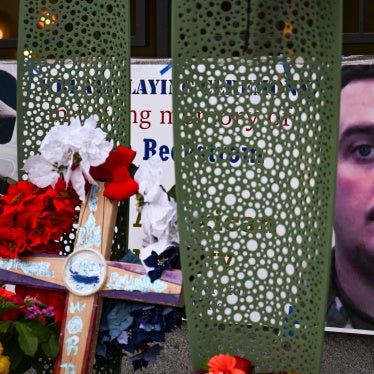US Army Sgt. Robert Bales pled guilty this week to murder for a gruesome set of attacks in Afghanistan in 2012 in which he walked off his Kandahar base in the middle of the night and shot 16 Afghan civilians, including 9 children.
“There’s not a good reason in this world for why I did the horrible things I did,” he said to a presiding judge at his court martial, at an army base near Seattle. If the court martial accepts his plea, part of an agreement with the prosecution, Bales will be sentenced to life in prison.
It is a good outcome that Bales has been held accountable for his deadly attacks on Afghan civilians. But his crimes are not the only heinous incidents involving US personnel to have occurred in Afghanistan since the US-led invasion in 2001, and unfortunately, serious punishments like his are all too uncommon.
Sadly—amazingly—reports of killings of “nine children” by US forces are not unique. In Kunar province in 2011, nine children aged 8 to 14 were gunned down by US helicopters while out collecting firewood, reportedly due to a “miscommunication.” (The US commander at the time, Gen. David Petraeus, apologized for the killings.) This followed a similar incident in the same province, in late 2009, when nine children were killed in a night raid, with Afghan government officials alleging that some had been executed. No one in either incident was ever brought to justice.
In another incident I researched almost 10 years ago in Ghazni province, nine children aged 9 to 12, reportedly out playing, were gunned down by A-10 Warthogs, an anti-tank aircraft designed to repel Soviet armored advances.
As the Afghanistan researcher for Human Rights Watch at the time, I interviewed witnesses who visited the attack site, and I remember writing down the children’s names in my notes: Habibullah, 11; Obaidullah, 10; Faizullah, 9; Ismail Jan, 11; Nabi Jan, 9; Habibullah, 12; Aminullah, 9; Bibi Toara, 10; and Bibi Tamama, 9. A New York Times article from the time described the children’s “embroidered caps, shredded with shrapnel…beside a half-dozen small rubber galoshes and caked pools of blood.”
The above cases are just airstrikes involving “nine children.” Not the cases involving eight or ten children, or 60 or 95 children, or the attacks with an unknown number of victims, like the massive sustained airstrikes in 2009 in western Farah province, which killed almost 100 civilians, mostly children, some blown into unrecognizable pieces.
The US military has, in more recent years, taken steps to reduce civilian casualties—unlike the Taliban and other insurgent forces, whom Human Rights Watch has criticized repeatedly for violations of the laws of war.
Civilian casualties frequently reflect the cruel uncertainties and errors of war rather than intent to kill civilians, but without robust investigations the public and victims’ families can never know the truth. The US military has done a poor job of holding its forces accountable for civilian deaths in violation of the laws of war, and a long list of other serious violations, like torture in detention and indiscriminate or disproportionate use of force during ground operations.
Consider an incident in Jalalabad in 2007, when US Marines, speeding away from an IED attack, unleashed a hail of automatic weapon fire over a stretch of six miles back to base—knowingly and at least indiscriminately—hitting teenage girls, random motorists, and old men walking. A US military report later found that 19 civilians had been killed and possibly 50 wounded, but no one was ever brought to account for the killings. This followed an uncannily similar incident the same year, also in Jalalabad, during which at least 10 civilians were killed and 33 wounded, including several children and elderly men.
Or consider an earlier example of a detention case: Army Specialist Willie Brand, who beat to death an innocent Afghan detainee named Diliwar at Bagram air force base in 2002. He was convicted of simple assault – there was no homicide charge – and received no prison sentence.
And there are more cases. Many, many more.
But even where there is strong evidence of criminal intent, few of these cases have ended in prosecutions. Of those that have gone to trial, fewer have resulted in serious punishment.
It is proper that Sgt. Bates has been held accountable. But in many respects this case is an outlier: an obvious perpetrator clearly acting on his own, outside of any military operation, allowing for the punishment of a wrongdoer without implicating others.
Part of the solution is to reform the military justice system, including embracing proposals now under discussion to give court-martial convening authority to an independent entity, outside the chain of command, so that unit commanders cannot protect their subordinates, or allowing the Department of Justice, which has concurrent jurisdiction over the military, to take on more cases. Some of these proposals are already being offered in the context of the military’s persistent problem of sexual abuse of female personnel.
The US military needs to take these recommendations seriously. A conviction in an important case may be a good outcome. But it’s not good enough.
John Sifton is the Asia advocacy director for Human Rights Watch.









